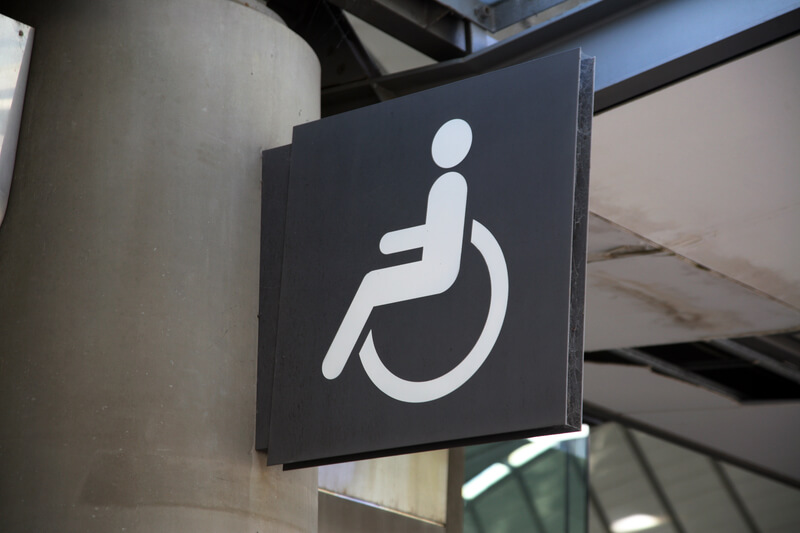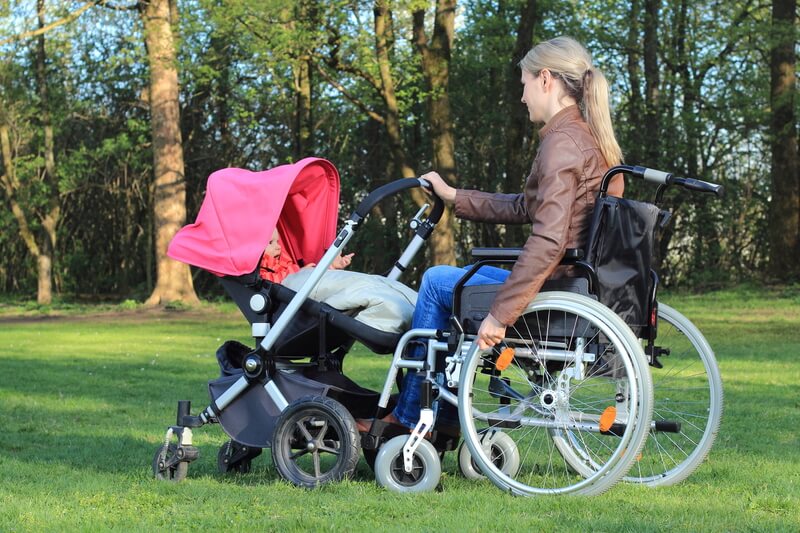
Share
Across Australia, the lack of suitable public toilets has long been a significant barrier to social inclusion and community engagement for people with disabilities. Navigating outings, from a trip to the park to a day at the footy, is often frustrating due to the absence of appropriate facilities.
However, the tide is turning: Changing Places is transforming the accessibility landscape and paving the way for a more inclusive society.
Let’s delve into the history, progress, and future of Changing Places in Australia.
What are Changing Places in Australia?

Photo 15044518 | Disabled © Onion | Dreamstime.com
Changing Places toilets are designed to accommodate individuals with high support requirements, offering a level of accessibility and dignity that goes beyond standard bathrooms.
These spacious, well-equipped bathrooms feature essential elements like:
A height-adjustable adult-sized change tableThis change table can be raised or lowered to suit the support worker's height, ensuring ergonomic and safe handling during the changing process. It accommodates adults, providing a sturdy and spacious surface with safety features such as side rails to prevent falls. |
A constant-charging ceiling track hoist systemThis ceiling-mounted hoist system is constantly charged, ensuring it is always ready for use. It allows for the safe lifting and transfer of individuals with limited mobility throughout the room, reducing the physical strain on caregivers and enhancing user safety. |
A centrally-located peninsula toiletThis toilet is strategically placed in the centre of the room to allow access from both sides. This design facilitates easier lateral transfers from wheelchairs and provides additional space for caregivers to assist from either side, improving comfort and accessibility for users. |
More circulation space than standard accessible toiletsThe restroom offers extra floor space compared to standard accessible toilets, allowing wheelchair users and individuals with mobility aids to move freely and turn around with ease. This additional space reduces the risk of accidents and enhances overall usability. |
An automatic door with a clear opening of 950mm at a minimumThis automatic door provides a wide entryway of at least 950mm, accommodating larger wheelchairs and mobility aids. The automatic function ensures that users can enter and exit the restroom without manually opening the door, improving accessibility for those with limited hand function or strength. |
A privacy screenThis screen offers a designated private area within the restroom, ensuring users can attend to personal hygiene needs with dignity and privacy. The screen is typically easy to maneuver and provides a visual barrier, enhancing the user's comfort and security. |
The Changing Places concept was first introduced in the United Kingdom in 2006, and it has since gained international recognition as a vital component of inclusive design. In Australia, Changing Places kicked off in 2011 when Maroondah City Council in Victoria sought permission to use the Changing Places branding and logo, paving the way for the first Australian Changing Places facility to open in 2014.
How accessibility is changing in Australia
Since the introduction of Changing Places in Australia, the movement has gained momentum, with the number of facilities growing to 268 as of 2024. While this progress is amazing, advocates and users recognise that much more needs to be done to ensure equitable access across the country.
Uneven distribution & pressing needs
The distribution of Changing Places in Australia has been uneven. The majority are in Victoria (123), followed by Western Australia (47) and New South Wales (39). Some states, like the Northern Territory, have not established a single Changing Places toilet.
This disparity highlights the need for a more coordinated and comprehensive approach to the availability of these essential facilities nationwide.
Inclusion in the National Construction Code
A milestone in the Changing Places process in Australia was the inclusion of "Accessible Adult Change Facilities" in the National Construction Code in 2019. This landmark decision mandated the installation of these specialised bathrooms in certain classes of public buildings, like shopping centres, sports venues, museums, and airports.
While this was a crucial step forward, advocates argue that the scope of this requirement needs to be expanded to encompass a broader range of public transport hubs and infrastructure.
Funding initiatives & partnerships
In 2022, the Australian government announced $32.2 million in funding for disabled toilets across four years to support the construction of Changing Places facilities in local government areas without existing ones. This injection of resources is a welcome development, but more sustained and targeted funding will be necessary to ensure the nationwide proliferation of these vital facilities.
Partnerships between government agencies, disability organisations, and private entities have been pivotal in driving the Changing Places initiative forward. Organisations like Think HQ, contracted by the Department of Families, Fairness and Housing, have been instrumental in promoting Changing Places and increasing their availability across the country.
The transformative impact of Changing Places in Australia

Photo 53216280 | Disabled © Riopatuca | Dreamstime.com
The significance of Changing Places extends beyond the physical infrastructure. These facilities can improve the lives of individuals with disabilities, their families, and support workers, unlocking new possibilities for social engagement, independence, and dignity in public.
Restoring freedom & dignity
The lack of suitable public toilets has long been a source of anxiety and exclusion for many individuals with support needs. Changing Places facilities allow them to venture into the community confidently, knowing their basic needs can be met in privacy.
This newfound freedom to explore and participate in everyday activities can impact their quality of life and overall well-being.
Enabling longer outings & increased independence
Before Changing Places, people with disabilities and their support workers often had to limit the duration of their outings, constantly mindful of when and where they could access an appropriate bathroom. With Changing Places, families can now stay out for longer periods, fully engaging in social and recreational activities without the constant worry of finding a suitable restroom.
Enhancing safety & reducing caregiver strain
The specialised features of Changing Places, like height-adjustable change tables and ceiling hoists, provide a more comfortable user experience and significantly reduce the physical strain on caregivers. This helps to prevent injuries and promotes the overall well-being of those who provide essential support.
Fostering inclusion & community engagement
By ensuring the availability of Changing Places in public spaces and transport hubs, the Changing Places movement is breaking down barriers to social inclusion. Individuals with disabilities and their families can now participate in community events, visit cultural attractions, and explore the world around them with a newfound sense of belonging and empowerment.
Active Mobility is a registered Changing Places provider, offering quality toileting and changing facilities for public spaces
At Active Mobility, we believe that Changing Places is a critical step towards creating a more inclusive society. By ensuring the widespread availability of these specialised facilities, we can empower individuals with disabilities to fully participate in community life, enjoy their freedom, and maintain their dignity.
As a registered Changing Places equipment provider, we work alongside architects, builders, government agencies, disability organisations, and the broader community to drive the expansion of Changing Places across Australia.
Need help planning your new Changing Places room or interested in further information? Contact us today.









